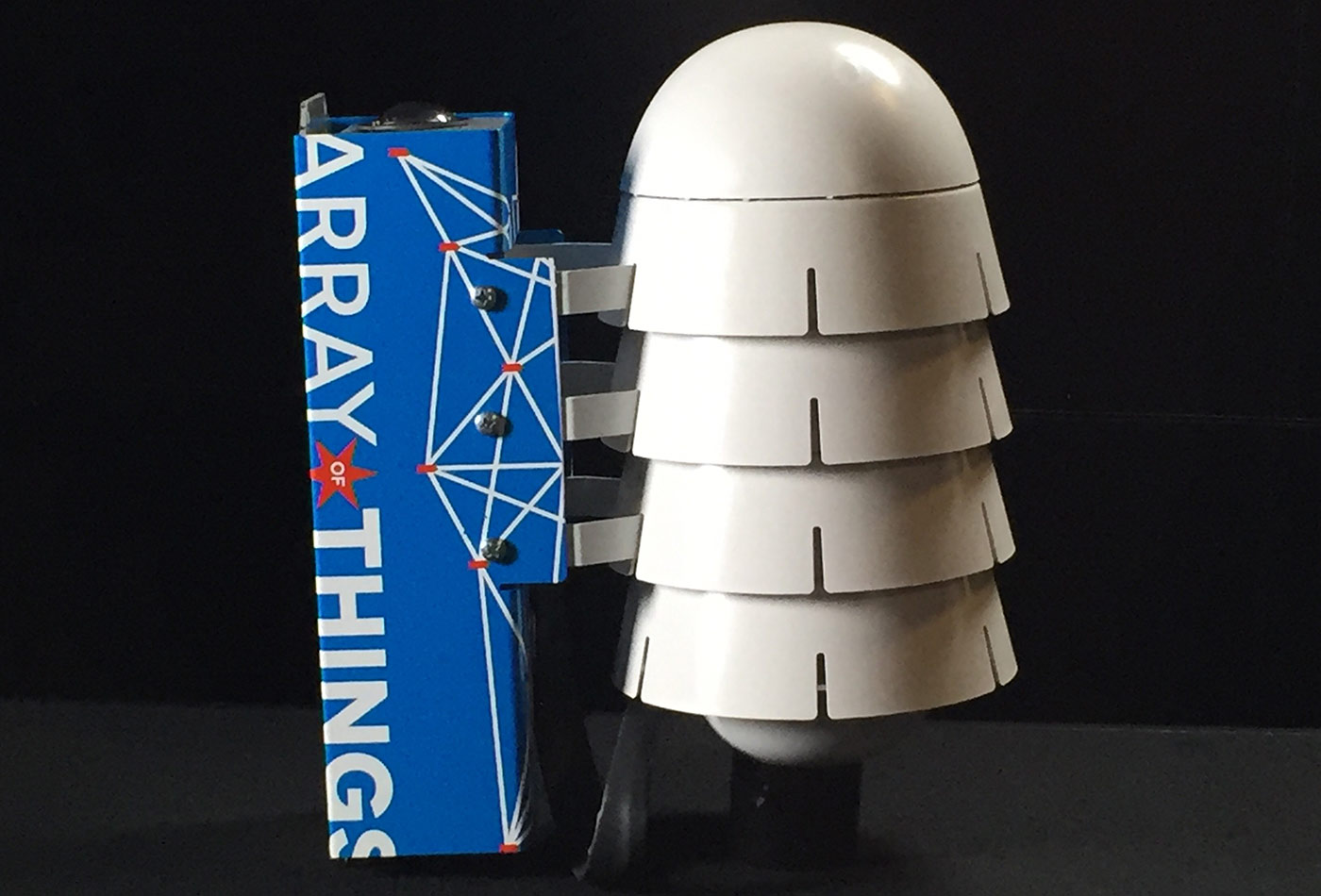Smart cities are safe and efficient cities
There’s money to be made in exhaust data (not just data exhaust).
 Array of Things node. (source: Courtesy of Array of Things, used with permission.)
Array of Things node. (source: Courtesy of Array of Things, used with permission.)
It’s become trite to point out that more data enables business processes to become more efficient—usually capitalizing on data already collected or “data exhaust.” Sometimes, though, it’s necessary to get out into the physical world and gather data, especially when the processes you want to optimize are physical processes like transportation and logistics—a topic much on my mind as we’ve been putting together the program for the Data, Transportation, and Logistics Sessions at the Strata Data Conference in London coming up in May. Coincidentally, the launch of Chicago’s Array of Things (AoT) project (a joint effort of the city and Argonne National Labs) is an excellent example of how to gather and provide data about the urban environment. This set of sensors and the data portal they feed will make last-mile delivery logistics—whether by conventional trucking or driverless vehicles—more efficient, safer, and more environmentally friendly. They’re also pushing the frontiers of “edge” and “fog” computing with local analysis and networking with smart or autonomous vehicles.
The AoT is a network of sensors that monitor the urban environment, from sound and vibration to air quality (yes, exhaust data!) and pedestrian traffic. As a privacy-preserving measure, cameras capture images, which are locally processed and reduced to an extracted measurement, such as the count of trucks or pedestrians that passed by in a 30-second window; the count—but not the images—are saved and made available as open data. The first round of sensors has been installed, with locations planned around the city. (42 locations have been selected, with funding from the National Science Foundation to install 500 by 2018).
Putting Array of Things data to work
Many of the benefits the AoT touts are focused on urban residents, but the explicit goal of the program is to enable collaboration and benefit to citizens and organizations, both nonprofit and private. Let’s think through some of the possibilities for transportation and delivery companies. The primary benefit the AoT will provide is, of course, traffic data. But why will it be better data than what’s currently available? It might be better to ask what this data will be better for. There are already many sources of traffic data, but a public sensor on city streets fills a vital gap. Highway traffic cameras and surveys only record limited-access roads. Mapping applications like Waze record vehicle movements on surface streets but, like any app dependent on users, they’re limited by adoption bias. A public and app-independent data set—even though it isn’t monitoring every street—offers any data science team the ability to correct for collection biases in other data. Especially creative data scientists might well aim to predict road traffic before it happens—with pedestrian counts, for example.
Furthermore, AoT data, by counting non-motorized users of the streets and sidewalks, offers help not just in last-mile planning, but in last-meters planning: the most time-consuming portion of a short-range trip may be getting into or out of a loading dock, and avoiding heavy pedestrian times at a given location can add up.
All these considerations apply even more in the paradigm of driverless, automated delivery. Automated vehicles are, of course, more dependent on environmental data, so any reliable external data source is even more valuable to an autonomous vehicle operator than to a conventional driver. The pedestrian and bicycle counts that the AoT provides will be particularly valuable: driverless vehicles are, for good reason, more timid around other users. Additionally, the signaling rituals we take advantage of as human drivers and walkers are not yet translated to the self-driving world—so, avoiding high traffic areas and, especially, times of day when there are a lot of pedestrians and cyclists out and about will speed up delivery routes.
Avoiding pedestrian-vehicle interaction will result in efficiency gains, of course, but also safety and health gains: off-peak delivery results in a variety of both safety and efficiency gains (from fewer pedestrian and cyclist deaths to better air quality), and detailed road-use data can result in many of those benefits without requiring middle-of-the-night delivery.
While Array of Things data will be openly available soon, the team is actively seeking early partners. They’re already in exploratory talks with transportation researchers on vehicle-to-infrastructure communications, working with the City of Portland to bring deep learning to the devices to examine differential usage patterns for bikeshare and private bicycles, and experimenting on whether it’s possible for an AoT camera to recognize and count near-accidents (with its onboard computational power and a deep learning model). It will be exciting to see what possibilities will be revealed at this intersection of smart cities and open data.
